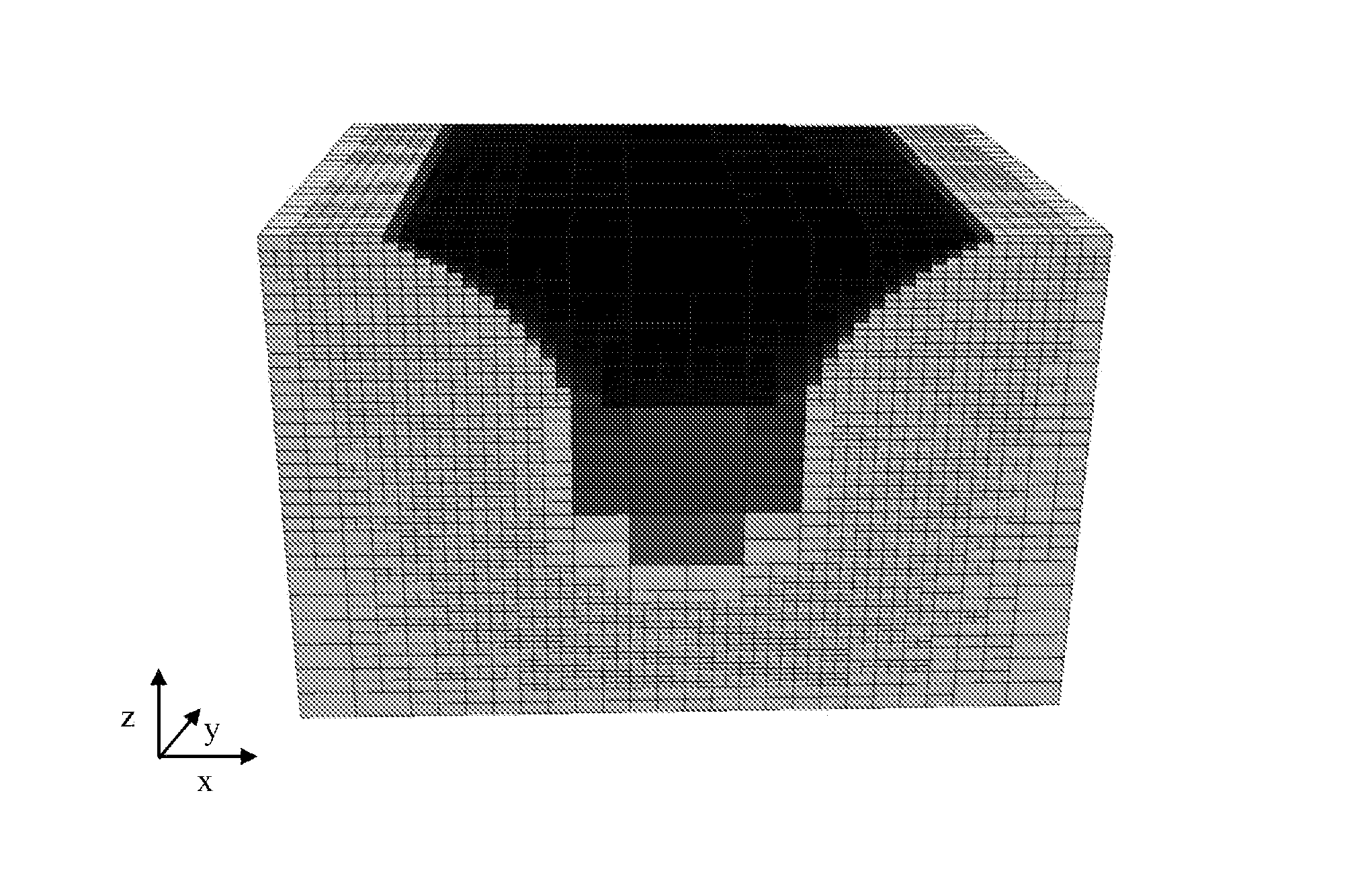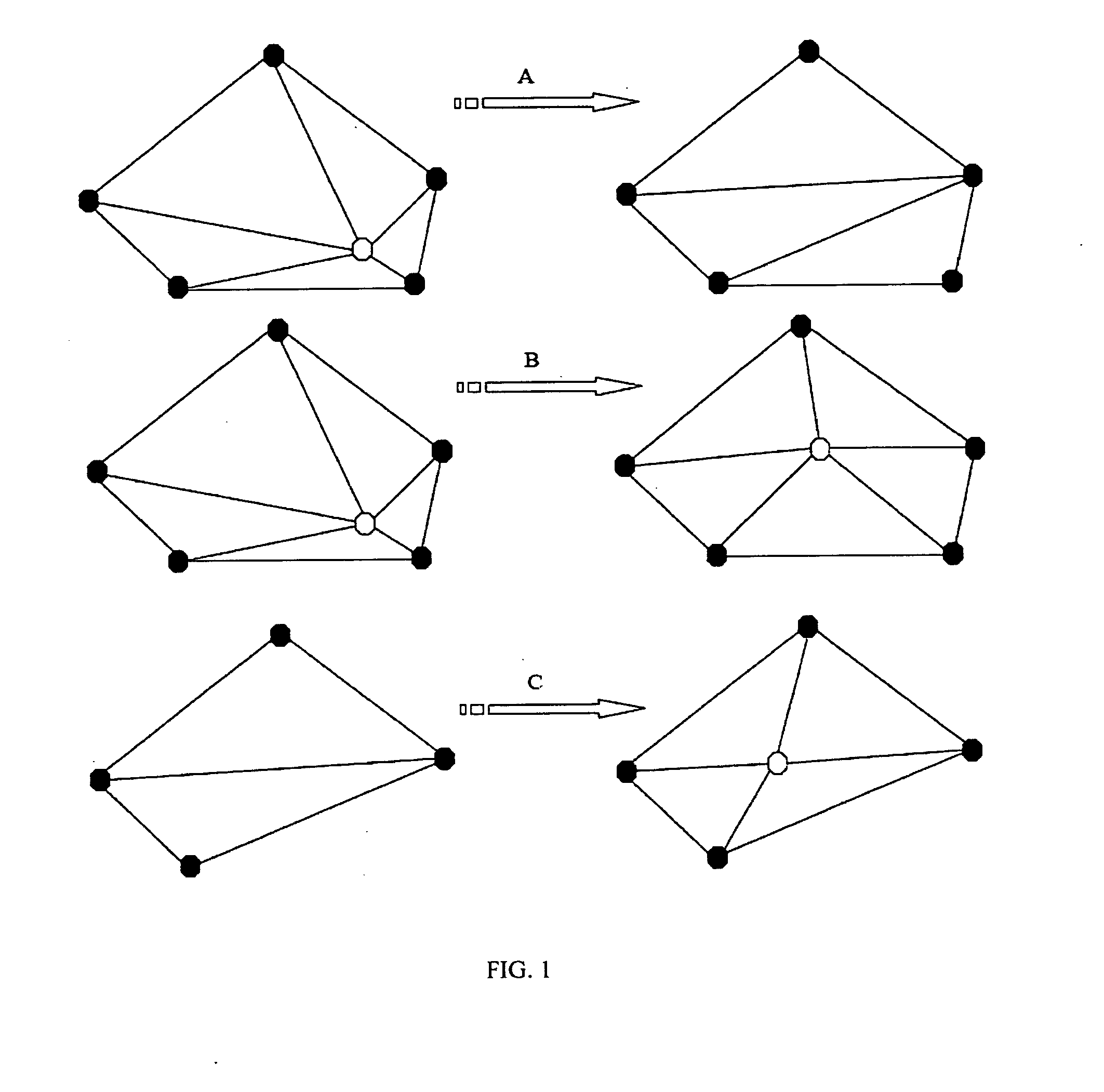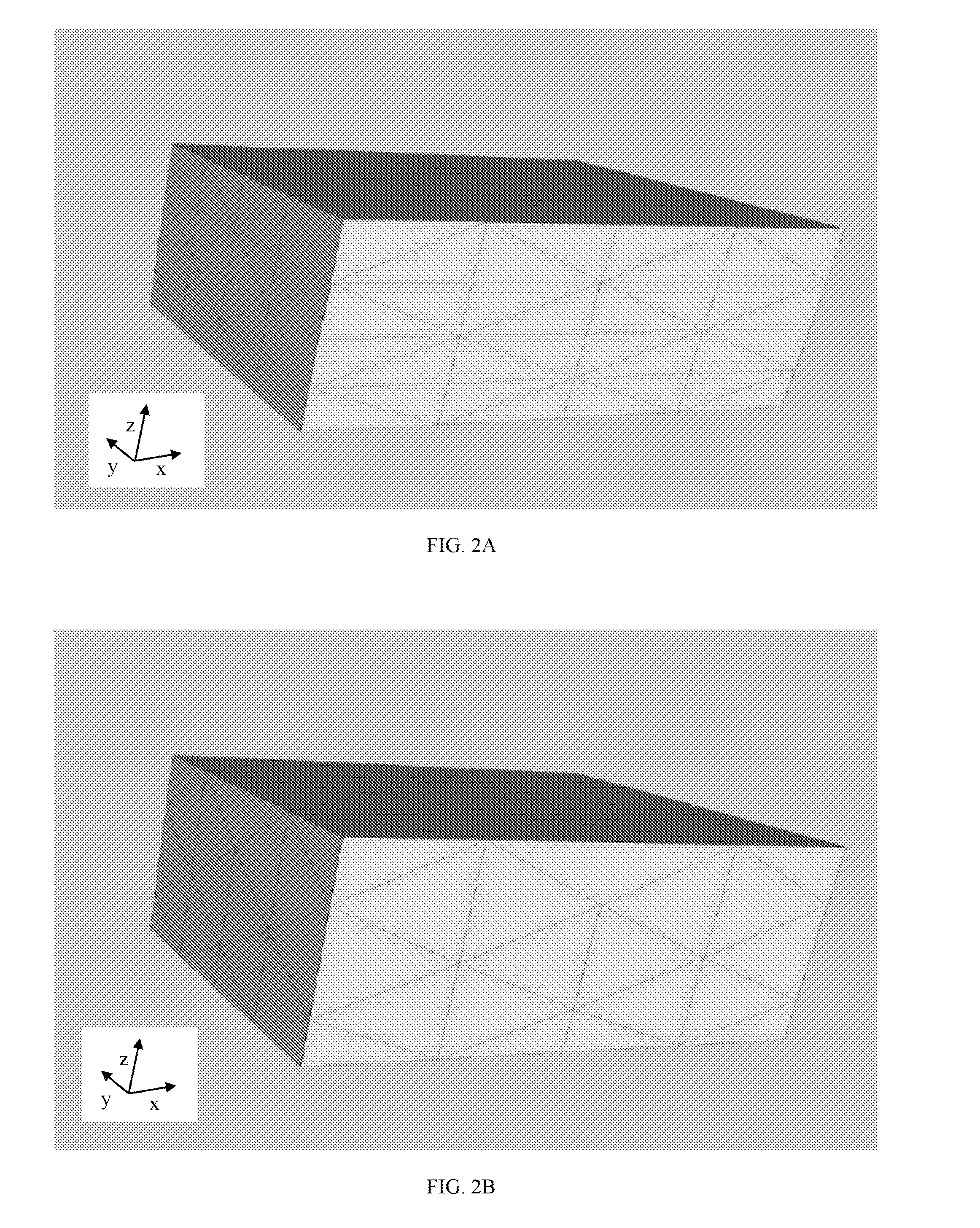Method of constructing an optimized mesh for reservoir simulation in a subterranean formation
a subterranean formation and mesh technology, applied in the field of oil exploration, can solve the problems of inability to perform reservoir simulation computations on a grid comprising a large number of mesh cells, and inability to correct appraisal,
- Summary
- Abstract
- Description
- Claims
- Application Information
AI Technical Summary
Benefits of technology
Problems solved by technology
Method used
Image
Examples
examples of application
[0145]The mesh optimization method according to the invention is illustrated in FIG. 2 in the case of a three-dimensional mesh of tetrahedral type. The current mesh, presented in FIG. 2A, is composed of 27 nodes and of three layers in the vertical direction (defined along the z axis). A reservoir simulation has been carried out and has demonstrated that the fluid flows occur very predominantly in a horizontal plane (defined in accordance with the 2 axes x and y). Since significant accuracy of the petro-physical properties is not necessary in the vertical direction, it is decided to operate a derefinement in the vertical direction. More precisely, the objective is to determine, on the basis of the current mesh presented in FIG. 2A, an optimized mesh for which, firstly, the length of edges in the z direction is twice as large as that of the current mesh, and secondly, the length of edges remains unchanged in the x and y directions. On completion of the optimization method according to...
PUM
 Login to View More
Login to View More Abstract
Description
Claims
Application Information
 Login to View More
Login to View More - R&D
- Intellectual Property
- Life Sciences
- Materials
- Tech Scout
- Unparalleled Data Quality
- Higher Quality Content
- 60% Fewer Hallucinations
Browse by: Latest US Patents, China's latest patents, Technical Efficacy Thesaurus, Application Domain, Technology Topic, Popular Technical Reports.
© 2025 PatSnap. All rights reserved.Legal|Privacy policy|Modern Slavery Act Transparency Statement|Sitemap|About US| Contact US: help@patsnap.com



